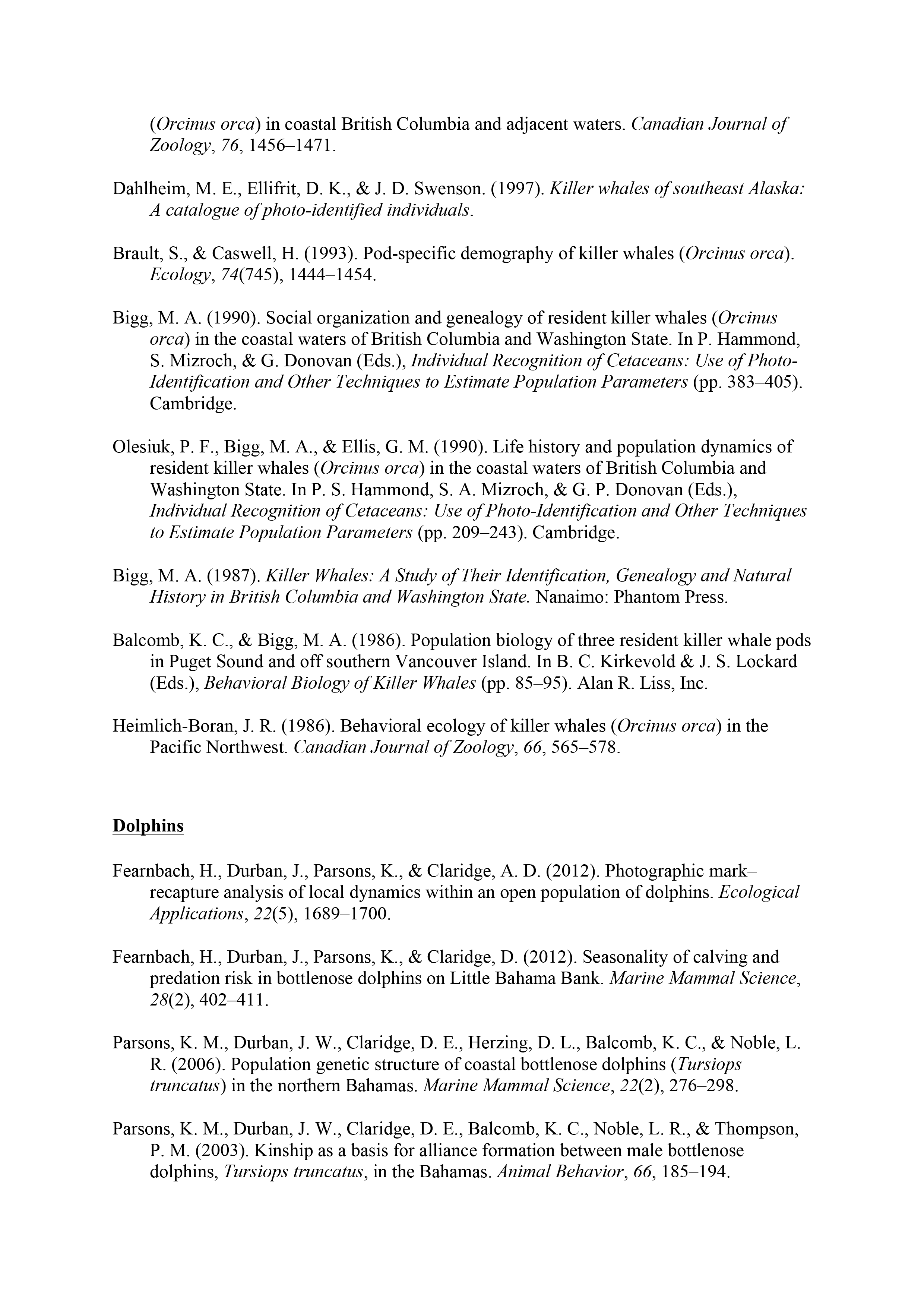recent
PUBLICATIONS

The following is a list of many of the Center for Whale Research publications. New articles are added once available.
RECENT RESEARCH
Inbreeding in an endangered killer whale population
M. J. Ford, K. M. Parsons, E. J.Ward,
J. A. Hempelmann, C. K. Emmons, M. Bradley Hanson, K. C. Balcomb & L. K. Park
Abstract
There are genetic risks associated with small population sizes, including loss of genetic diversity and inbreeding depression. The southern resident killer whale Orcinus orca population is a group of ~80 whales listed as ‘endangered’ under the U.S. Endangered Species Act. Recovery efforts are focused on increasing prey and reducing impacts from environmental disturbance, but the population’s small size and insularity suggest that inbreeding depression could also be important. We analyzed genotypes at 68–94 nuclear loci from 105 individuals to refine a population pedigree to evaluate inbreeding and the relationship between multi-locus heterozy-gosity and fitness. Our results expand upon an earlier study and shed new light on both inbreeding within this population and the mating patterns of killer whales. We found that only two adult males sired 52% of the sampled progeny born since 1990. Confirming earlier results, we found male reproductive success increased with age. Based on the pedigree, four sampled offspring were the result of inbred mating – two between a parent and offspring, one between paternal half-siblings, and one between uncle and half-niece. There is no evidence to date that the survival or fecundity of these individuals is lower than normal. There was some evidence for inbreeding depression in the form of a weakly supported relationship between multi-locus heterozygosity and annual survival probability, but the power of our data to quantify this effect was low. We found no evidence of inbreeding avoidance in the population, but a late age of breeding success for males may indirectly limit the frequency of parent/offspring mating. The effective number of breeders in the population is currently ~26, and was estimated to have ranged from 12–53 over the past 40 years. The population that produced the oldest (pre-1970) sampled individuals was estimated to have 24 effective breeders. Overall, our results indicate that inbreeding is likely common in the population, but the fitness effects continue to be uncertain.
CWR Publications - Killer Whales









